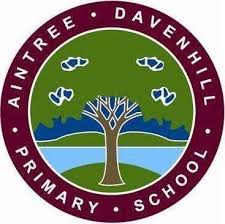Design Technology
DESIGN AND TECHNOLOGY
At our school, Design and Technology is taught through the carefully sequenced Kapow Primary scheme, which provides an inspiring, rigorous, and practical curriculum. Through this scheme, pupils are encouraged to use creativity and imagination to design and make products that solve real and relevant problems across a range of contexts. The curriculum ensures pupils consider the needs, wants, and values of themselves and others while developing solutions.
The Kapow scheme ensures full coverage of the national curriculum and enables children to acquire a broad range of subject knowledge. It supports cross-curricular links with disciplines such as mathematics, science, engineering, computing, and particularly art and design. The integration of Kapow’s Art and Design scheme ensures a cohesive development of key creative and technical skills, allowing children to build and apply a consistent design process across both subjects.
Pupils are encouraged to take risks and become resourceful, innovative, and capable citizens. They learn to evaluate past and present design and technology, developing a critical understanding of its impact on daily life and the wider world. High-quality D&T education, as delivered through Kapow, contributes meaningfully to children’s creativity, culture, well-being, and future economic understanding.
KEY STAGE 1
Through the Kapow scheme, KS1 pupils are taught to:
-
Design purposeful, functional, and appealing products for themselves and others based on specific design criteria.
-
Generate and communicate ideas through talking, drawing, templates, mock-ups, and where appropriate, digital tools.
-
Select and use tools and materials suitable for a variety of tasks, including cutting, shaping, joining, and finishing with different materials such as textiles, construction materials, and ingredients.
-
Explore and evaluate existing products and assess their own creations against design criteria.
-
Develop technical knowledge by building simple structures and exploring mechanisms such as levers, sliders, wheels, and axles.
These experiences are carefully linked with skills developed in the Kapow Art and Design curriculum, ensuring progression in visual communication, creativity, and design thinking.
KEY STAGE 2
At KS2, pupils deepen their knowledge and skills by:
-
Researching and developing design criteria to inform innovative and functional designs aimed at specific users.
-
Communicating ideas using discussion, annotated sketches, exploded diagrams, prototypes, and computer-aided design (CAD).
-
Using a wide range of tools, materials, and components with increasing accuracy and purpose, focusing on both functionality and aesthetics.
-
Investigating and analysing existing products and evaluating their own work using design criteria and peer feedback.
-
Understanding influential designers and key historical developments in design and technology.
Additionally, pupils:
-
Apply structural knowledge to reinforce and strengthen complex structures.
-
Use mechanical and electrical systems such as gears, pulleys, cams, and circuits within their designs.
-
Integrate computing to monitor, program, and control products, promoting digital literacy alongside practical skills.
This progression is underpinned by close links to the Kapow Art and Design scheme, which reinforces key skills in design, form, and function, supporting a holistic understanding of design thinking and innovation.
COOKING AND NUTRITION
Kapow’s D&T scheme also ensures that cooking and nutrition are taught as essential life skills. Pupils learn to:
-
Understand the principles of a healthy and varied diet.
-
Prepare and cook a variety of dishes using a range of techniques.
-
Learn about seasonality and the sources of ingredients.
Through this, children not only develop practical cooking skills but also gain an appreciation for food as a cultural and creative practice. The curriculum aims to instil a life-long love of cooking while ensuring pupils are able to feed themselves and others affordably and nutritiously.
